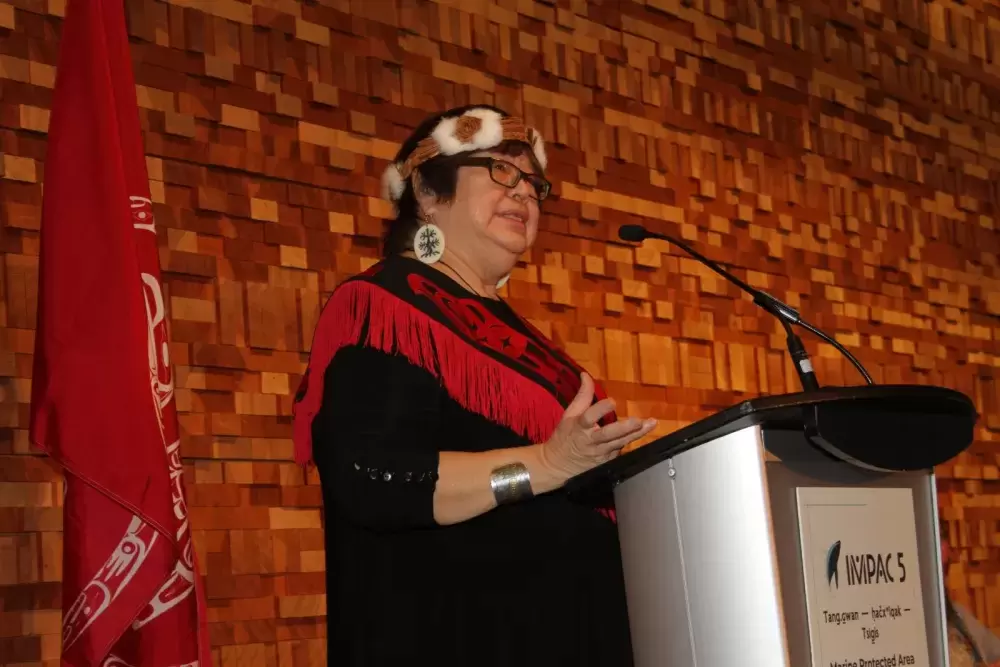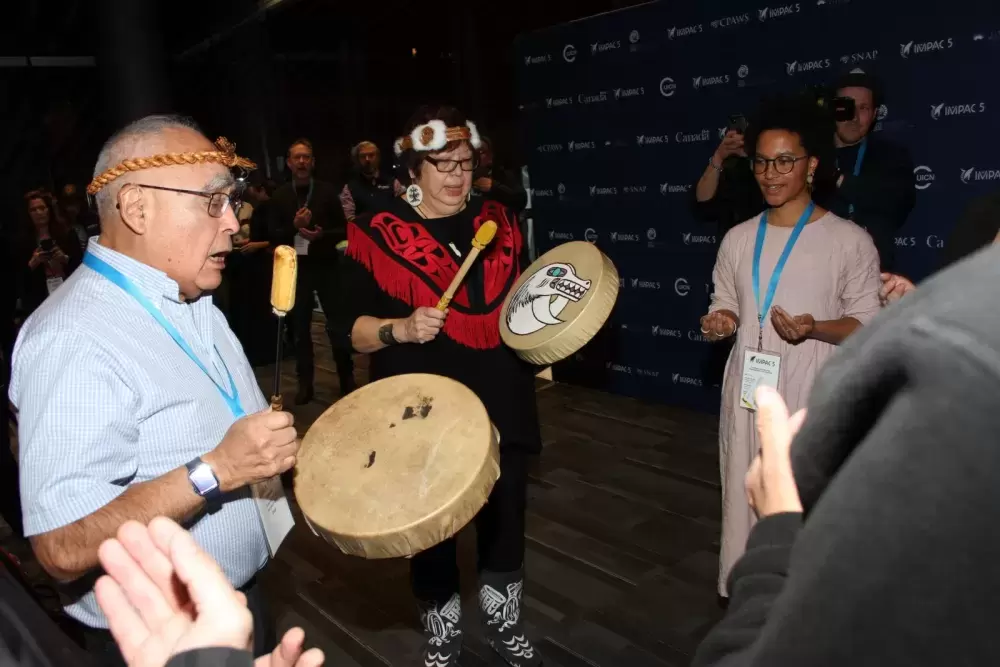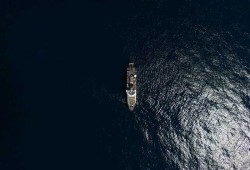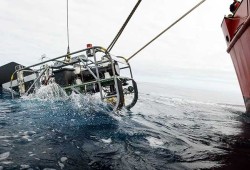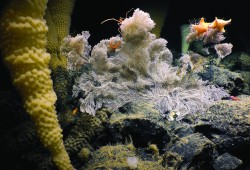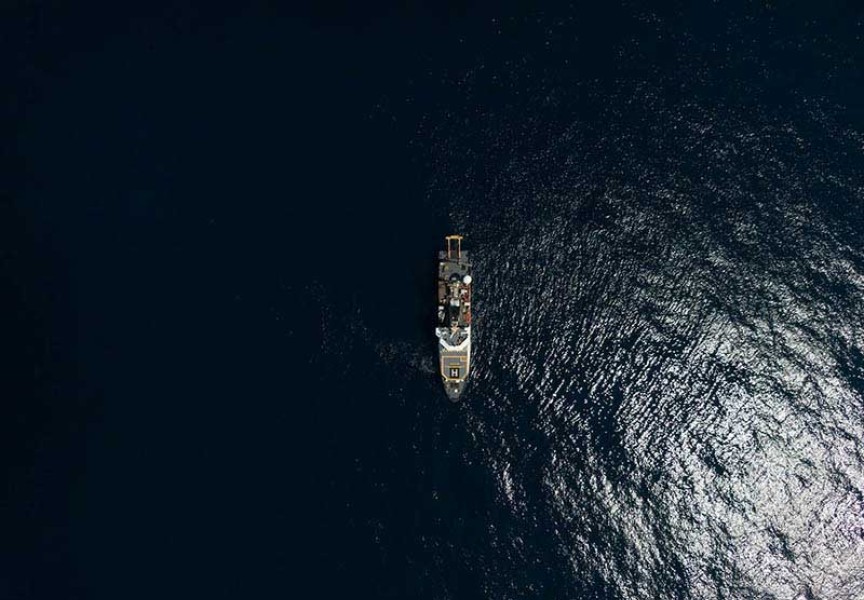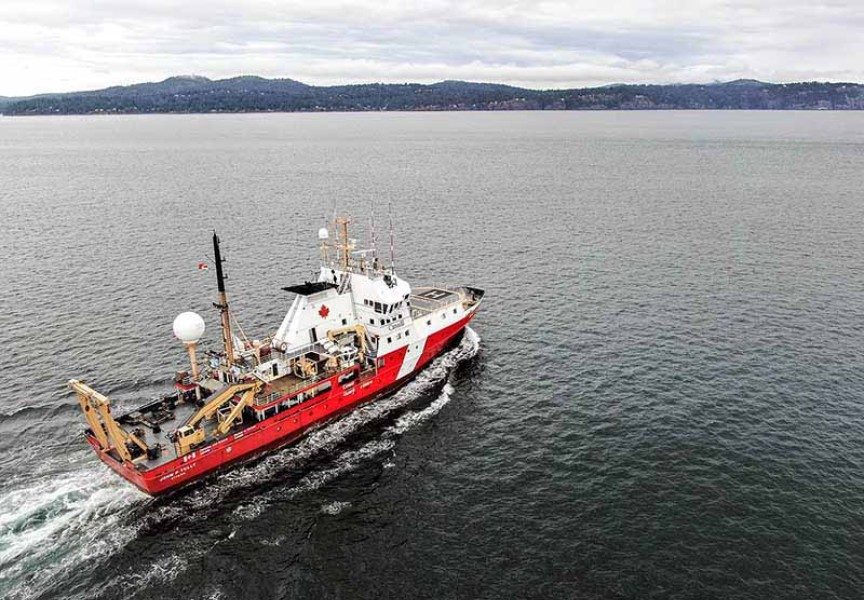After years of negotiating the shared governance of a vast offshore area west of Vancouver Island, today the federal government and four First Nations groups announced a major step towards protecting the unique deep-sea territory.
A memorandum of understanding has been reached between Fisheries and Oceans Canada, the Nuu-chah-nulth Tribal Council, the Pacheedaht, Quatsino First Nation and the Council of the Haida Nation to preserve what is now known as Tang.ɢwan — ḥačxw iqak — Tsig̱is Marine Protected Area. The name of the proposed MPA encompasses Haida, Nuu-chah-nulth and Quatsino, meaning “deep ocean”, “very deep waters off of our shores” and “monster of the deep” in the respective languages.
Comprising an ocean area four times the size of Vancouver Island, the proposed MPA is located approximately 150 kilometres offshore, spanning little-known deep-sea territory. The stipulations of the draft agreement are now set to be published on Canada Gazette Part 1 on Feb. 18, allowing 30 days for public input before the parties move towards a binding agreement to manage the 133,019 square-kilometre area.
“We are utterly committed to reconciliation,” said Canada’s Fisheries Minister Joyce Murray at the announcement of the proposed MPA on Feb. 7.
“It looks like a simple agreement, but there’s a lot of years of fighting, wordsmithing,” said Cloy-e-iis, Judith Sayers, president of the Nuu-chah-nulth Tribal Council at the event, which was held at the Vancouver Convention Centre on the traditional territory of the Musqueam, Squamish and Tsleil-Waututh Nations.
Protection began in 2017, when it was identified by DFO as an offshore Pacific area of interest. Five years of discussion with the First Nation’s followed, resulting in a pending agreement that entails a shared governance of the area, said Murray.
“Yes, it does involve co-governance, absolutely,” she said.
This means a management board is planned to oversee the area, with representation from the First Nations involved and the federal government that “seeks to operate on a consensus decision-making basis”, according to a press release from Fisheries and Oceans Canada.
“There will be many discussions on how we will work together in co-management and the Indigenous leadership that this Tang.ɢwan — ḥačxw iqak — Tsig̱is will be managed through,” said Murray.
Once identified as an offshore area of interest in 2017, bottom trawling fishing was banned in the area. If it becomes an MPA, further restrictions would be enforced under Canada’s Oceans Act, prohibiting activities like deep-sea mining, oil and gas drilling and dumping.
“The thing that we’re all confident will occur is that by conserving the sea bed floor from some of the activities that disrupt it, we’ll actually have a greater abundance and diversity of fish from protected areas that will spill over into areas where fishing is permitted,” explained the fisheries minister.
The announcement took place at IMPAC5, an international congress on marine protected areas. Two days earlier at the congress the federal government, 15 First Nations and the province announced an action plan for the Northern Shelf Bioregion, a network of offshore territory extending from the top of Vancouver Island to Alaska. This plan guides efforts to preserve ocean and marine wildlife in the area, another step towards protecting more of Canada’s ocean.
The federal government is working towards a pledge to protect 25 per cent of Canada’s oceans by 2025, then 30 per cent by 2030. If passed, Tang.ɢwan — ḥačxw iqak — Tsig̱is would be the largest MPA in Canadian waters, comprising 0.88 per cent of the ocean area claimed under federal jurisdiction.
“Here in Canada we’ve gone from safeguarding less than one per cent of Canada’s oceans to conserving over 14 per cent,” said Murray of the progress made so far. “These protected areas are giving the ocean and marine life a chance to rebuild and that is to the benefit of everyone.”
In recent years the feds have undertook expeditions to the large offshore area, sending a Canadian Coast Guard vessel to document and study the little-known region. What has been found so far are an undersea range of at least 46 mountains, called sea mounts. The area also has fissures in the earth’s crust that release warm water, hydrothermal vents that support a diversity of surrounding marine life unique to the deep-sea region. The proposed Tang.ɢwan — ḥačxw iqak — Tsig̱is MPA covers over 70 per cent of Canada’s underwater mountains.
Murray noted that the MPA could help to mitigate the effects of the human-caused changes in the earth’s climate.
“The more biomass and diversity we have in the oceans, the more the oceans can do the job that they’ve always done, of being a sink for carbon that’s been eroded in the last decade,” she said. “We need to restore oceans as well as protect them so that they can perform their function of absorbing greenhouse gas emissions.”
During the announcement a video was shown displaying marine life from the area, including a grey whale filmed jumping from the water.
“Our relatives in the ocean are celebrating,” said Sayers.
“I often think about flying over the ocean and think, ‘What does it look like down there? Is it just as depressing as looking at our clear-cut mountains?’,” she continued. “We need to make changes now to protect the oceans, those beautiful mounts and vents and all of the habitat and biodiversity that is there. There are many spiritual places there.”
The path towards the Tang.ɢwan — ḥačxw iqak — Tsig̱is Marine Protected Area follows the recognition of the Gwaii Haanas National Marine Conservation Area, a 1,500 square-kilometre offshore region west of Haida Gwaii that achieved designation in 2010. Gaagwiis, Jason Alsop, president of the Council of the Haida Nation, sees the proposed MPA as another step towards preserving the ocean’s resources.
“For our people, protecting this area is about keeping our way of life as ocean people, being able to sustain ourselves and our communities with the bounty of the sea and all of the food that’s provided for us from the ocean,” he said.
Sayers dreams of a time when First Nations can attain MPA designation in their respective territories on their own.
“One of my dreams, mine and others across the country, is that we could do our own Indigenous marine protected areas, where we could declare those areas that are significant to us spiritually, culturally for the protection of all of those resources,” she said. “The Government of Canada right now is the mechanism that we have, and we’re grateful that we have something that we can work with, but we need to push them further.”


